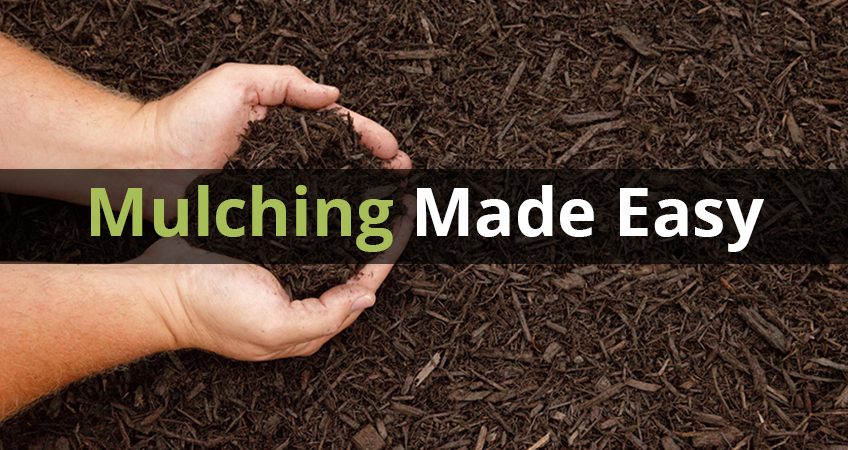Since so many different types of mulch are readily available, another important question that homeowners need to ask is, “How Much Mulch Should You Order?” To help answer this question, only a few items are necessary—a pen, a piece of paper, a tape measure, and a calculator.
Article: How Much Mulch Should You Order
Homeowners can re-energizing the appearance of properties by simply adding a fresh layer of mulch to various flower beds, around trees, and other areas of the lawn. Not only does mulch offers a clean, consistent look for most properties, but mulch also has several benefits to its application. Mulch reduces the loss of water from the soil through evaporation, acts as a protective layer to keep unwanted weeds from sprouting, prevents certain pests from flourishing, and adds needed nutrients to the soil.
So “How much mulch should you order?” To help answer this question, only a few items are necessary—a pen, a piece of paper, a tape measure, and a calculator. When purchasing mulch, most nurseries and home improvement stores will sell this decomposable material in the unit measurement of cubic yards (one cubic yard covers 324 feet). With these items in tow and our step-by-step instructions below, any professional or novice can calculate the perfect amount of cubic yards needed to mulch and revitalize any property.
- Determine square footage—Measure the length and width of the areas that need mulch. Once you have those measurements, multiply those numbers together to find the square footage. For example, if one of the areas needing to be mulched is 20 feet by 30 feet, the square footage is 600 feet. Perform this measurement for all of the areas needing mulch and add those numbers together to ascertain the total square footage.
- Choose the depth—Determine the thickness of the mulch. In most gardens and flowerbeds, a range of 2 to 3 inches thick is a perfect depth for mulch. However, beds and areas that are heavily infested with weeds and/or grass, more mulch will be needed to keep those unwanted species from thriving. In this case, anywhere between 6 to 8 inches of mulch may need to be used. Be careful not to layer mulch any higher than 8 inches; mulch at that height or higher traps more heat causing certain types of mulch to become highly flammable.
- Calculate all the numbers—Take the total square footage of the mulching areas and multiply that by the depth of the mulch needed. For example, if the square footage is 600 feet and the depth desired is 3 inches, 600 x 3=1800. After that calculation, divide 1800 by 324 (1 cubic yard covers 324 feet) and round up to the nearest whole number to find out how many cubic yards should be purchased. 1800/324=5.55, so 6 cubic yards of mulch are needed.
Double check the math—Remember the old adage, “Measure twice, cut once?” Same applies when purchasing mulch. It’s best to double check your math as a slight, incorrect calculation or one incorrectly entered number can mean an unnecessary return trip to the nursery or home improvement store, wasting valuable mulching time and/or money for overage.
Properly buying the correct amount of mulch can be easily calculated with a few tools that most individuals have laying around the house and also by performing some simple math. Making sure that you purchase the correct amount of mulch is relatively easy and can save headaches, time, and money. By following these simple steps, you can rest assured that you are not over buying or under buying the mulch needed to make your property the envy of the neighborhood.
